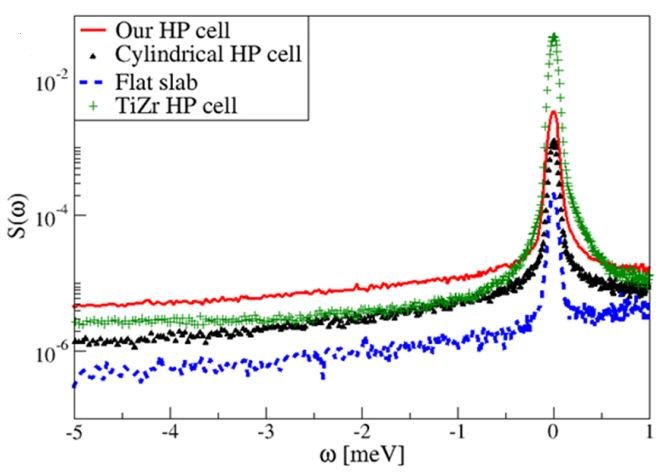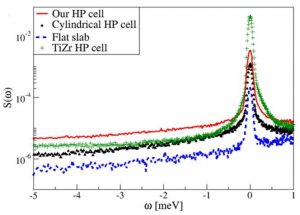Julie Wolanin, Jérôme Giraud, Claude Payre, Marianne Benoit, Claire Antonelli, Damien Quemener, Iliass Tahiri, Matthieu Vandamme, Jean-Marc Zanotti, and Marie Plazanet, Review of Scientific Instruments 92 (2021) 024106
In comparison to condensed matter, soft matter is subject to several interplaying effects (surface heterogeneities and swelling effect) that influence transport at the nanoscale. In consequence, transport in soft and compliant materials is coupled to adsorption and deformation phenomena. The permeance of the material, i.e., the response of the material to a pressure gradient, is dependent on the temperature, the chemical potential, and the external constraint.
Therefore, the characterization of water dynamics in soft porous materials, which we address here, becomes much more complex. In this paper, the development of an original setup for scattering measurements of a radiation in the transmitted geometry in oedometric conditions is described. A specially designed cell enables a uniaxial compression of the investigated material, PIM-1 (Polymers of Intrinsic Microporosity), in the direction perpendicular to the applied hydraulic pressure gradient (up to 120 bars). High pressure boosting of the circulating water is performed with a commercially available high-pressure pump Karcher. This particular setup is adapted to the quasi-elastic neutron scattering technique, which enables us to probe diffusion and relaxation phenomena with characteristic times of 10−9 s–10−12 s. Moreover, it can easily be modified for other scattering techniques.
https://doi.org/10.1063/5.0030297



